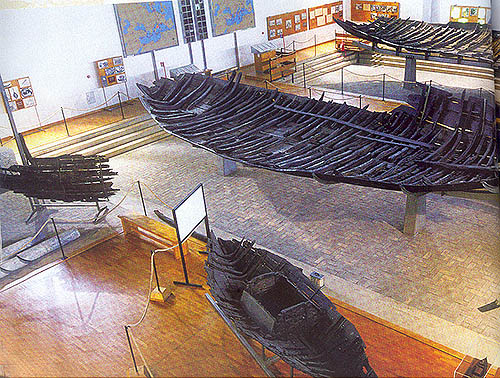
A report by Gerard Huissen
'Il museo fantasma di Fiumicino riaprirà, ora è ufficiale.' With this announcement on the third of March 2017 the Italian newssite “Pontile News” opened an item about the ultimate and final decision to renovate and reopen the maritime museum of Fiumicino. The museum, for safety reasons already closed in 2002, houses the five best preserved antique Roman ships.
(Fiumicino 1 and 2) Two of the ships were identified as so called caudicariae ships, well known from old sources. These caudicariae, a kind of large river vessel, were used for transportation of merchandise from the seaport to Rome. Without sails, they were pulled with the aid of ropes by men (the helciarii) or oxen, to the docks alongside the river Tiber at Rome. This system was used till the end of the nineteenth century.
(Fiumicino 3) This too is a river vessel, but smaller compared to the previous one.
(Fiumicino 4) This little ship, provided with a square sail, was used for coastal navigation or fishing.
(Fiumicino 5) The fifth one was a vessel especially for fishing. It was equipped with a live well in the middle for transport of the fish. The bottom of the live well was perforated to keep the fish alive by the circulation of the water inside.
Besides the ships numerous objects were exposed. Objects associated with life and equipment on board of the ships and with the cargoes: marble, amphorae etc. Many of these objects were found inside the sunken vessels in the port of Claudius.
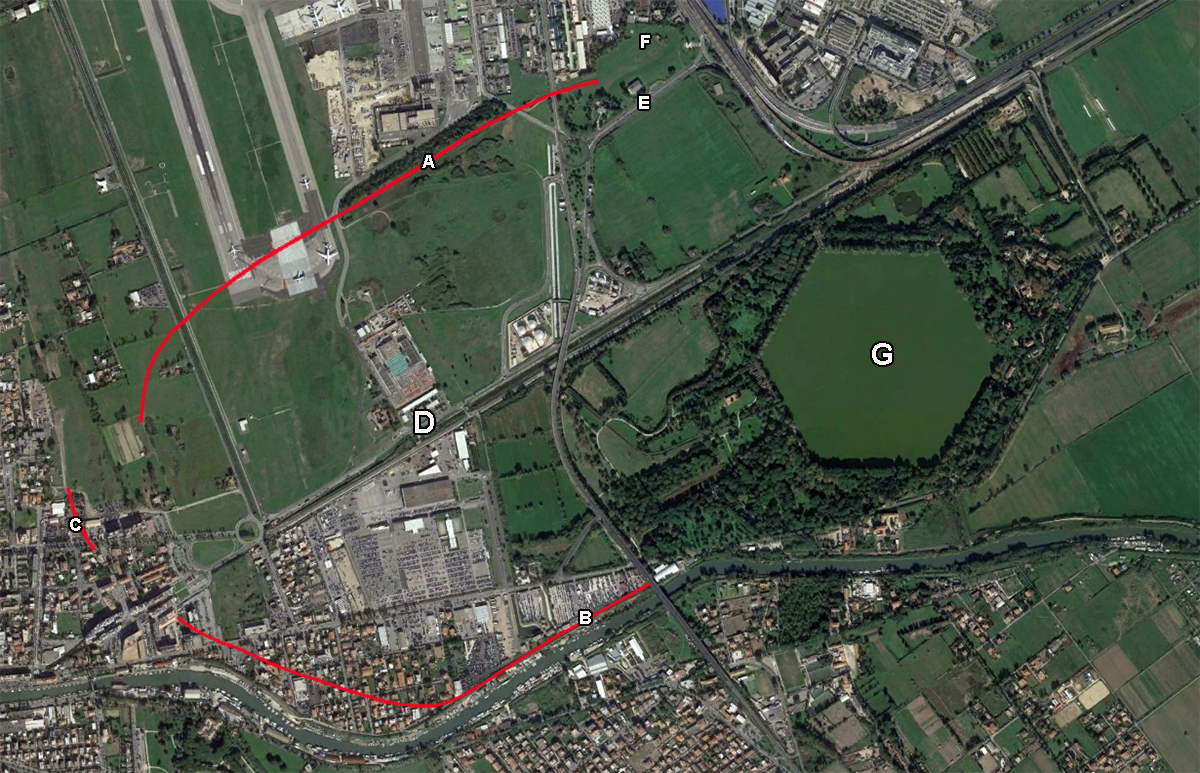
The renovation of the museum, with a budget of 1,7 million euro, should be finished at the beginning of 2019.
The 15 past years
Every year, going to Ostia, I drove along the museum, which I visited once before it was closed in 2002. I always got out of my car to read on the closed entrance door if there was any progress or not. Every year the same: the museum was closed and seemed to stay closed for ever. Nevertheless I did not stop always for nothing.
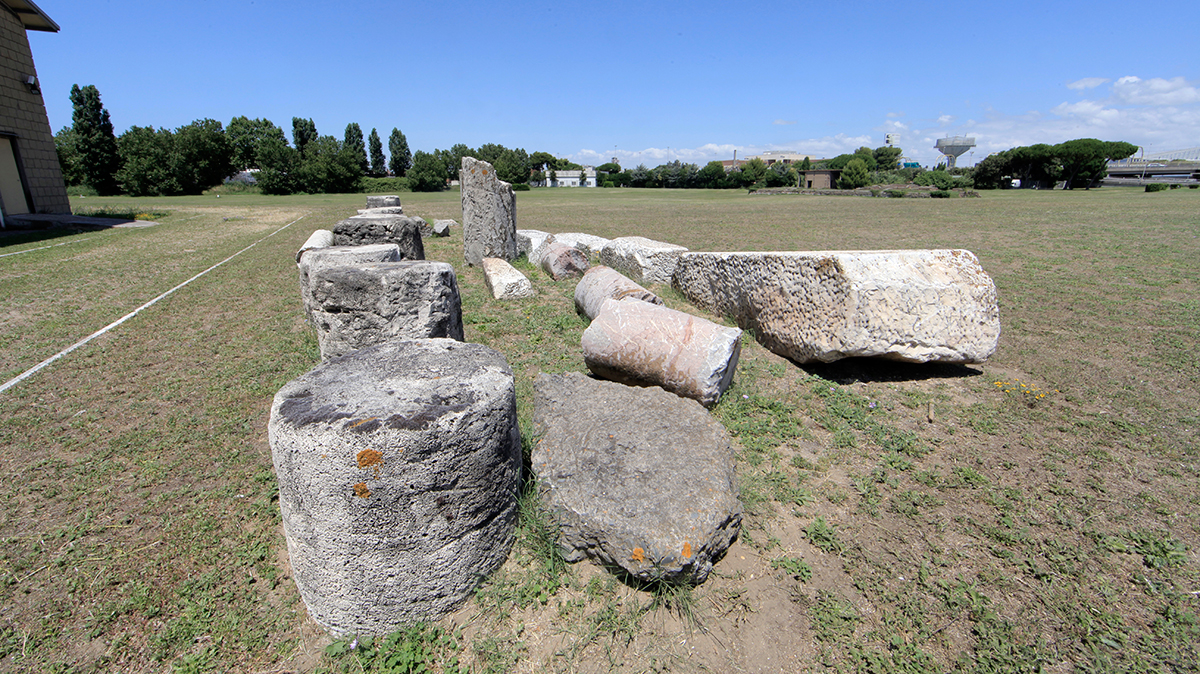
Around the museum you can find plenty of interesting stuff if you have an eye for it. Did you know that the marble blocks guileless laying next to the museum are excavated cargo from the sunken ships in the port of Claudius?
The capitaneria
East of the museum the contours of a small building stand out against the sky. If you walk from the museum towards that building you will find a small excavation, part of which is roofed and closed for the protection of a mosaic. This was probably the customs office and the residence of the harbour master. At the backside you see a small slope, maybe used as a slipway for small vessels.
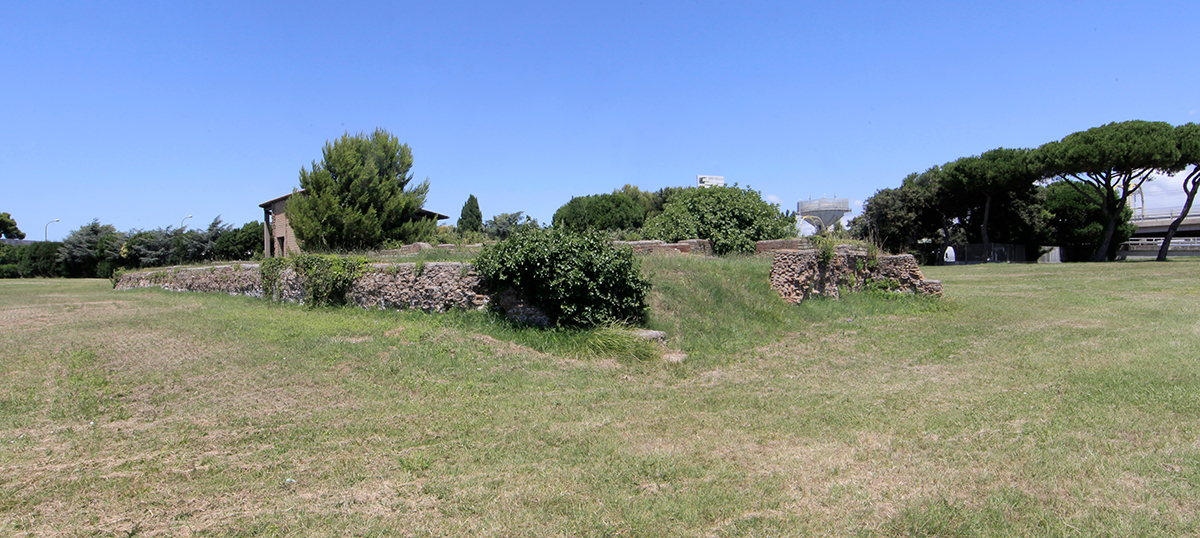
The excavation lies free in the open, with the exception of the already mentioned mosaic room. The building is situated at the beginning of the northern mole of the port of Claudius (some archaeologists think that this is not the mole, but a part of the quays 3). The building was excavated in the 1960s and dates originally from the second century AD.
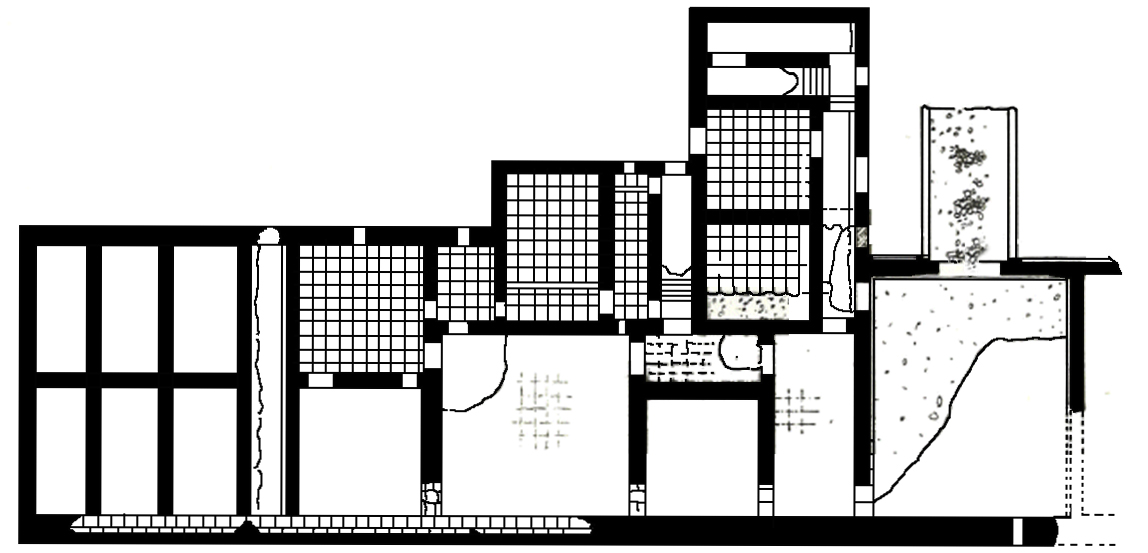
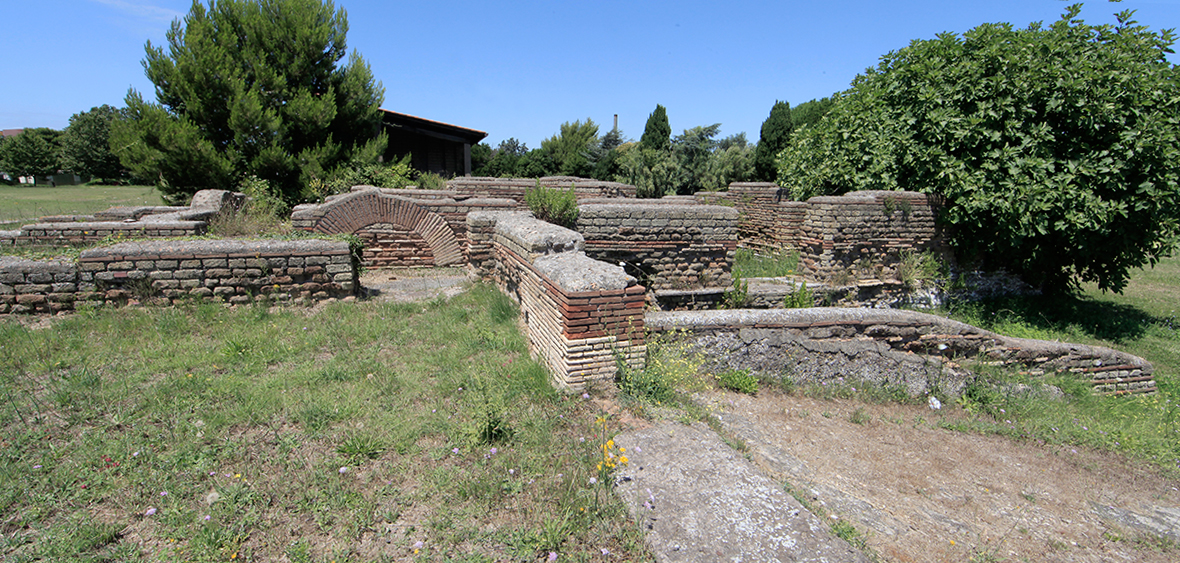
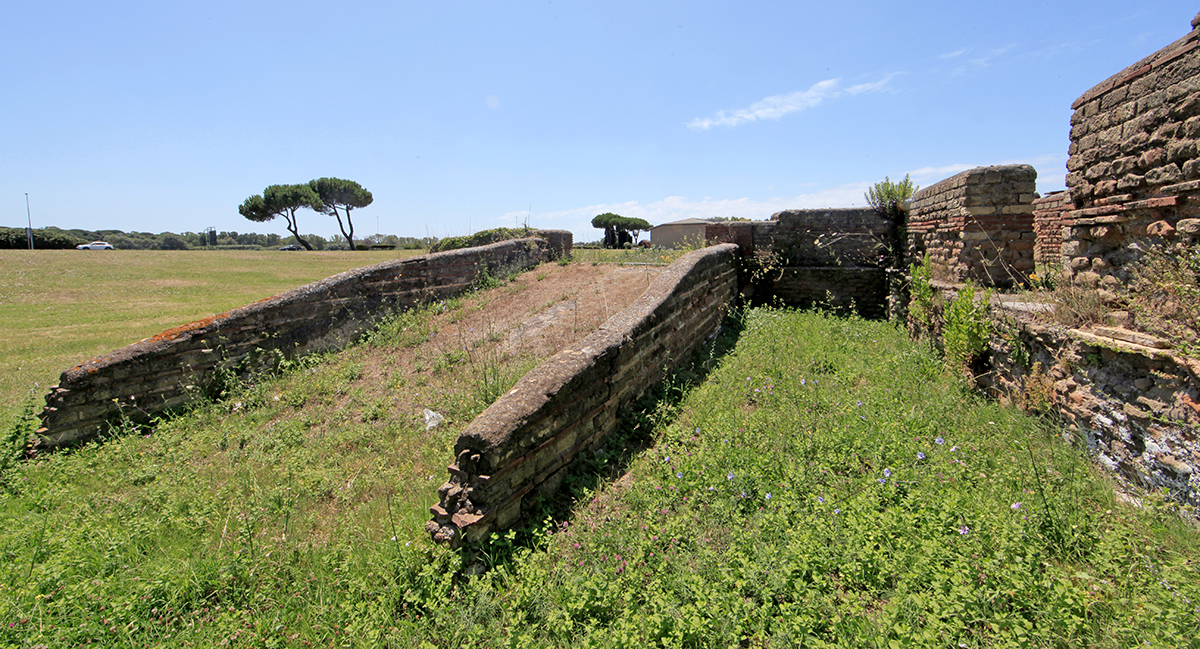
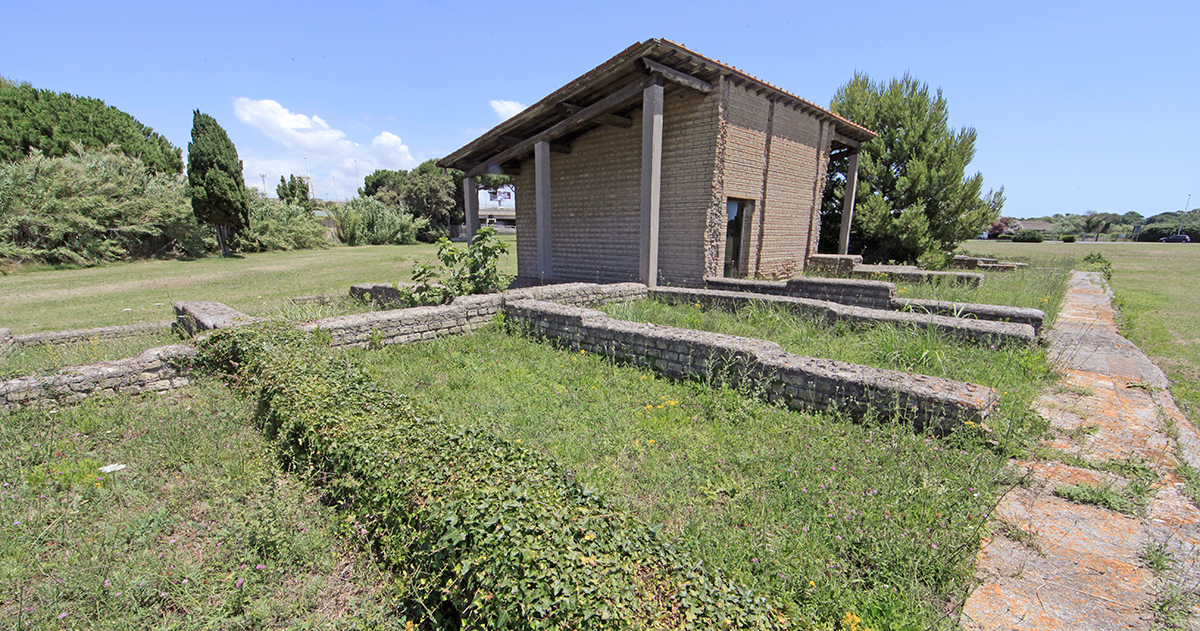
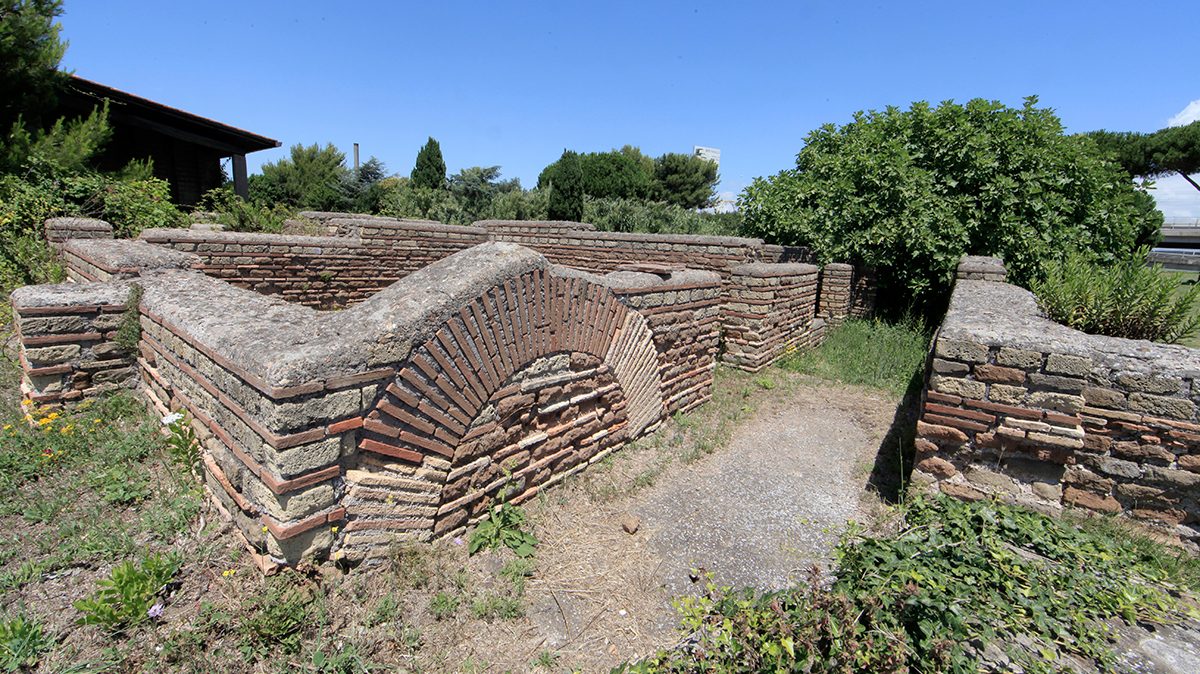
The moles of Claudius
West of the museum you can still see part of the northern mole of Claudius (the red line A on fig. 2). Maybe visually not so spectacular, but realising where you are standing and how the situation was here about 1900 years before, your imagination will b estimulated.

The port of Claudius, built around 42 AD, covered 200 hectare and was provided with a northern and a southern mole. In the mouth of the harbour, between the two moles, an artificial island was created on which the famous lighthouse was erected (see the article: ’The hidden harbour’). The base of this island was the submerged ship which had brought an obelisk (now on St Peter's square) to Rome. Nevertheless, Claudius' harbour was not exactly safe. Ships inside the harbour were storm-swept and many disappeared into the waves. Silting too became a major issue. Trajan came with a solution and built a new inland harbour in connection with the old one of Claudius. The harbour structure, called Portus, developed into an enormous logistic centre and became the most important harbour of Rome. It kept this position till at least the end of the 6th -7th century AD. The capitaneria was a very important part of this maritime infrastructure.
Notes- 1: Photo: Betasom.
- 2: See also the article 'The hidden harbour'.
- 3: See http://www.ostia-antica.org/portus/c004.htm.
- 4: Plan: after Testaguzza 1970, p. 99.






 We are committed to providing versions of our articles and interviews in several languages, but our first language is English.
We are committed to providing versions of our articles and interviews in several languages, but our first language is English.